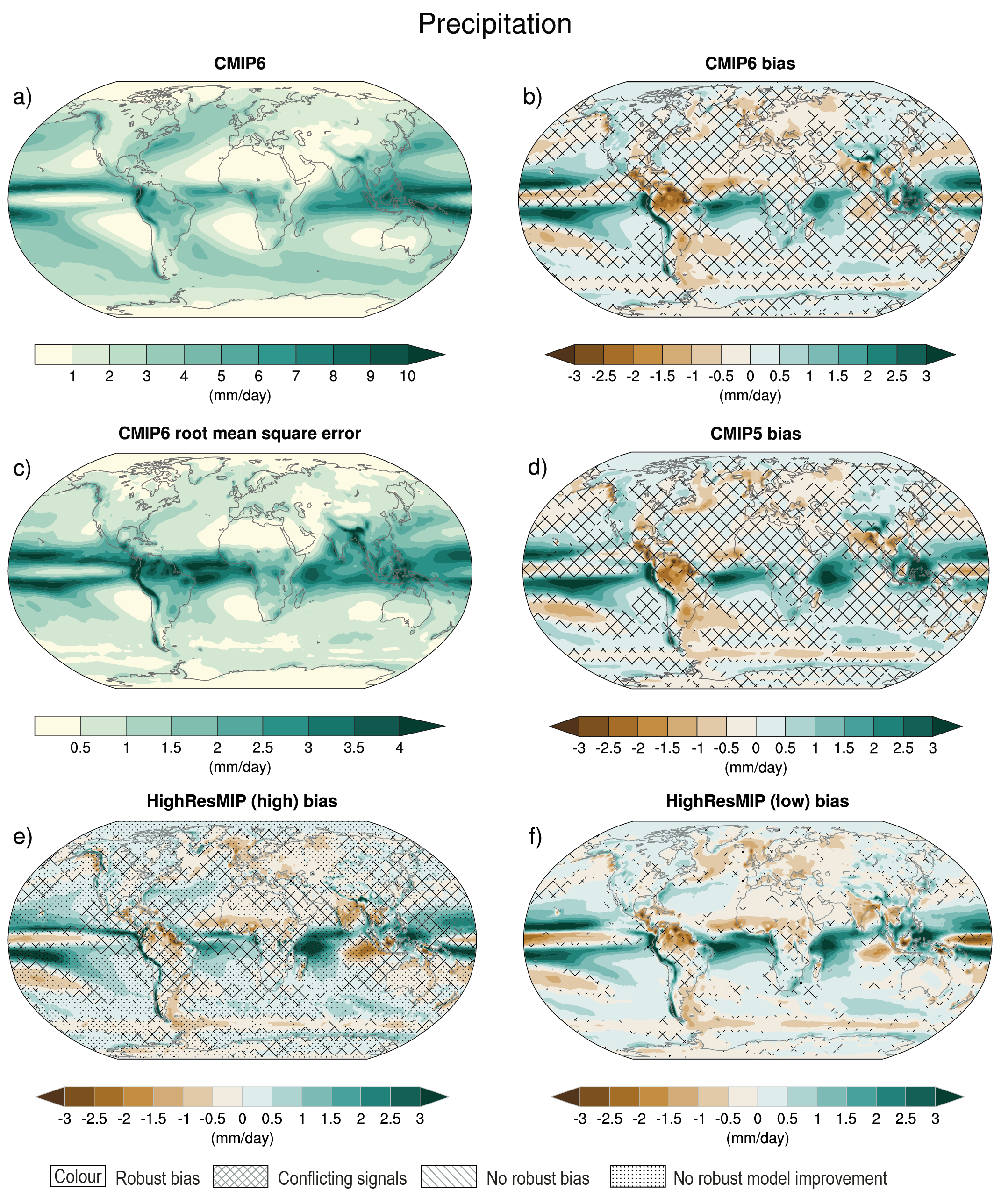Back chapter figures
Figure 3.13
Figure caption
Figure 3.13 | Annual-mean precipitation rate (mm day–1) for the period 1995–2014. (a) Multi-model (ensemble) mean constructed with one realization of the CMIP6 historical experiment from each model. (b) Multi-model mean bias, defined as the difference between the CMIP6 multi-model mean and the precipitation analysis from the Global Precipitation Climatology Project (GPCP) version 2.3 (Adler et al., 2003). (c) Multi-model mean of the root mean square error calculated over all months separately and averaged with respect to the precipitation analysis from GPCP version 2.3. (d) Multi-model mean bias, calculated as the difference between the CMIP6 multi-model mean and the precipitation analysis from GPCP version 2.3. Also shown is the multi-model mean bias as the difference between the multi-model mean of (e) high resolution and (f) low-resolution simulations of four HighResMIP models and the precipitation analyses from GPCP version 2.3. Uncertainty is represented using the advanced approach. No overlay indicates regions with robust signal, where ≥66% of models show change greater than the variability threshold and ≥80% of all models agree on sign of change; diagonal lines indicate regions with no change or no robust signal, where <66% of models show a change greater than the variability threshold; crossed lines indicate regions with conflicting signal, where ≥66% of models show change greater than the variability threshold and <80% of all models agree on the sign of change. For more information on the advanced approach, please refer to the Cross-Chapter Box Atlas.1. Dots in panel (e) mark areas where the bias in high resolution versions of the HighResMIP models is not lower in at least three out of four models than in the corresponding low-resolution versions. Further details on data sources and processing are available in the chapter data table (Table 3.SM.1).
